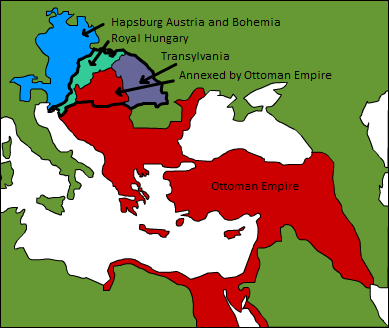Battle of Mohacs (1526) - Reasons, Consequences, and Importance
The Battle of Mohacs was a decisive battle between the Ottoman Empire and the Kingdom of Hungary. It was fought in 1526 and ended with a comprehensive victory for the Ottoman Empire. The result was the disintegration of Hungary and the cessation of long-standing wars between Hungary and the Ottomans.
Background
The Ottoman
Empire was continuously expanding its territory westwards since its inception.
In this process, they fought against various Christian kingdoms, including
Hungary. The Ottoman Empire and the Kingdom of Hungary had been at war since
the Battle of Nicopolis in 1396. Both adversaries fought separately several
times, while Hungary also sided with other Christian nations against the Ottomans
on various occasions.
Suleyman
the Magnificent, the tenth sultan of the Ottoman Empire, continued these
advances after his coronation in 1520. He initially captured Belgrade (now in
Serbia) from Hungary in 1521. Later, he decided to eliminate this nuisance. He
launched an invasion against Hungary in May 1526 at Mohacs, now in southern
Hungary.
The Battle
Suleyman
himself commanded the Ottoman army and marched toward Hungary in April 1526.
The Ottomans advanced without resistance until they reached Mohacs, the area
chosen by the Hungarian king Louis II for battle. As opposed to 60,000 Ottoman troops,
the Hungarians could only assemble 35,000 personnel due to the absence of any
foreign support. The major strengths of the Ottomans were their elite units of
Janissaries and 300 canons. The Hungarians only had 85 guns.
The
Hungarians started the battle with a fierce offensive using their cavalry. It
caused some damage and chaos in the ranks of the Ottomans. However, the
janissaries and canons soon eradicated the effectiveness of this offensive. The
fast-moving Ottoman cavalry soon encircled the Hungarians. After that, the
annihilation of the Hungarian military started. Over half of the Hungarian
troops, including Louis II, died during the battle. On the contrary, the
Ottomans lost only 2,000 of their men.
Consequences of the Battle of Mohacs
The war ended the existence of an independent Hungarian kingdom. Initially, the victors divided Hungary into three parts: Ottoman Hungary, Transylvania, and a small portion of Royal Hungary.
 |
| Defeat in the war resulted in the disintegration of Hungary |
The civil
war in the next few decades resulted in the absorption of a large part of
Hungary into the Ottoman Empire in 1547. The Ottomans remained ruler of Hungary
by the end of the 17th Century.
Reasons for Ottoman Victory
- The Kingdom of Hungary was already declining due to various factors. The former king Vladislaus I (1490-1516) relieved taxes at the expense of a powerful military. It weakened the defense of the kingdom against the powerful Ottoman Empire.
- Suleyman II adopted an aggressive policy against Hungary from the beginning. He captured Belgrade and its surrounding areas in 1521. This act devoid Hungary of its strongest fortress on the Danube. It also paved the way for the Ottomans to strike Hungary directly without any obstacles.
- Hungary joined various battles against the Ottomans as an ally of neighboring Christian countries in the past. However, it failed to gain much support from its allies during this battle for its survival. As a result, Hungary was short of men and canons compared to the artillery and battle-hardened soldiers of the Ottoman Empire. It made it easier for the Ottomans to encircle and annihilate a smaller army lacking advance weaponry.
Comments
Post a Comment